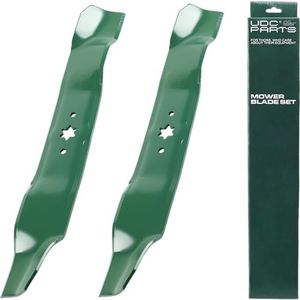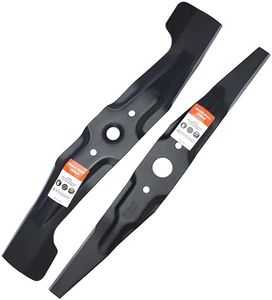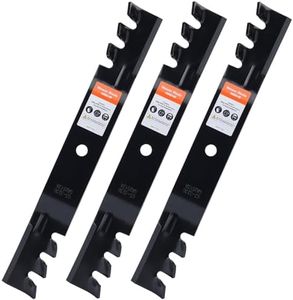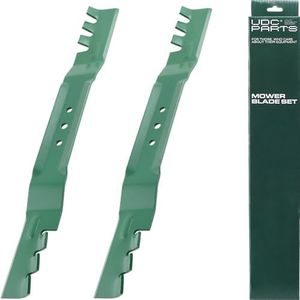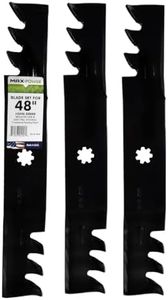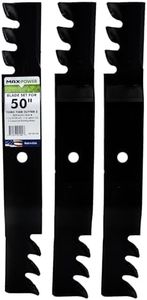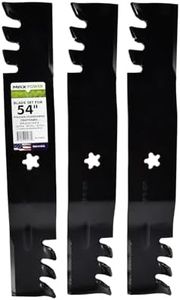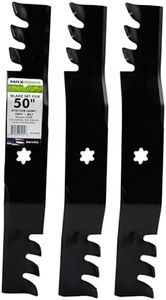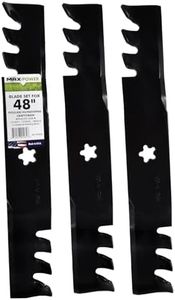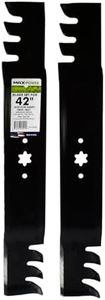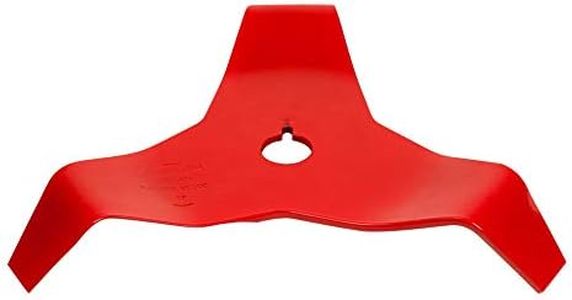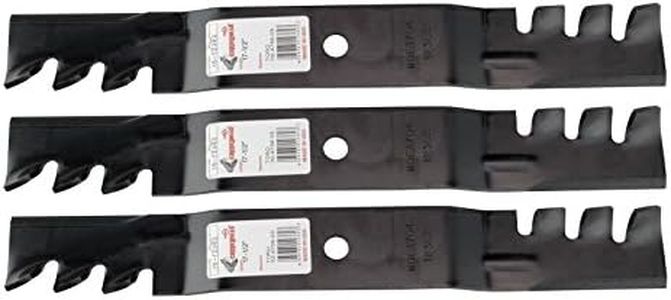We Use CookiesWe use cookies to enhance the security, performance,
functionality and for analytical and promotional activities. By continuing to browse this site you
are agreeing to our privacy policy
10 Best Mulching Blades
From leading brands and best sellers available on the web.Buying Guide for the Best Mulching Blades
When choosing mulching blades for your lawn mower, it's important to understand how different features can affect their performance and suitability for your lawn. Mulching blades are designed to finely chop grass clippings and return them to your lawn as natural fertilizer. Finding the right set ensures efficient mowing, healthy lawn growth, and easier yard maintenance. To choose the best fit, you should know your mower's requirements, the conditions of your lawn, and your personal mowing habits.Blade LengthBlade length refers to the distance from one end of the blade to the other and must match your mower’s deck size. Using the right blade length is important because a blade that's too short won't cut the full width of your mower deck, while one that's too long won't fit or could be dangerous. Blade lengths are typically divided into short, medium, and long options depending on mower size. You can find the right length by checking your mower's manual or measuring the original blade. Always choose the exact size recommended for your mower to ensure safety and optimum performance.
Blade WidthBlade width is how wide the blade is, and it affects cutting efficiency and how well clippings are mulched. Wider blades can lift and cut more grass at once, but might not fit all mower decks, while narrower blades allow for more airflow but may require more passes over the lawn. Width is commonly measured in inches, with small, medium, and large categories. To select the right width, consider your mower's deck design and how thick or tall your grass usually grows. Follow the manufacturer’s recommended width to maintain safety and performance.
Blade ThicknessThis refers to how thick or robust the blade is. Thicker blades are more durable and can handle rougher lawns with sticks or small debris, while thinner blades may provide a cleaner cut for well-maintained lawns but can wear out more quickly. Thickness is typically divided into light, standard, and heavy-duty categories. If you mow less frequently or have a yard with tougher conditions, a thicker blade is a good choice. For smooth, weekly-mowed lawns, a standard thickness usually provides a great balance.
Number of Cutting SurfacesMulching blades often have extra cutting surfaces or curved shapes to help recut clippings. Some have two surfaces, while others have more complex designs. Blades with multiple surfaces chop grass finer, improving mulching performance. If you want very fine clippings for better lawn health, pick a blade with more cutting surfaces. For a basic mulch with fewer passes, standard designs may be enough.
Center Hole Type and SizeThe center hole is where the blade attaches to the mower. Hole types include round, star-shaped, or rectangular, and sizes vary between models. This part is crucial because the wrong type or size will not allow the blade to be attached securely. Always check your mower’s requirements, as this is usually listed in the manual or can be measured from your current blade. Match the center hole exactly for a safe fit and proper operation.
Blade Material and CoatingMulching blades are typically made of steel, with some having additional coatings for rust and corrosion resistance. Material quality affects durability, sharpness, and lifespan. Standard steel is durable for regular lawns, while coated blades last longer in moist or challenging conditions. If you often mow wet grass or have a damp environment, consider a blade with rust protection. For regular conditions, standard steel is generally suitable.
Lift DesignThe lift design describes the shape of the blade and how much upward airflow it creates to circulate and recut clippings. Low-lift blades are gentle on the lawn and best for sandy or dry grass, while high-lift blades provide more suction, helpful for thick or wet lawns. Some mulching blades have a medium lift to balance performance and airflow. Pick your lift design based on how often you mow, your grass type, and the typical moisture level of your lawn.

